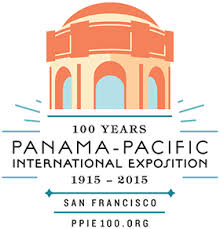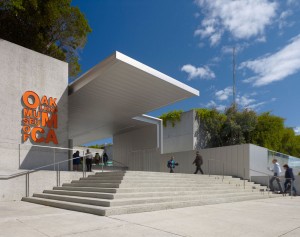Oakland Museum to exhibit rarely seen artifacts from Pacific cultures
 OAKLAND, California — Members of Pacific communities and cultures will voice the contemporary context to rarely exhibited historical and ritual objects and newly commissioned works of art in Pacific Worlds, a new exhibition at the Oakland Museum of California (OMCA) on view May 30, 2015 through January 14, 2016.
OAKLAND, California — Members of Pacific communities and cultures will voice the contemporary context to rarely exhibited historical and ritual objects and newly commissioned works of art in Pacific Worlds, a new exhibition at the Oakland Museum of California (OMCA) on view May 30, 2015 through January 14, 2016.
The exhibition examines the cultural practices of the Pacific that continue to thrive in California today. It is presented to mark the celebration of the 100th anniversary of the 1915 Panama-Pacific International Exposition (PPIE) in San Francisco, Pacific Worlds examines the deep and many-layered histories of California’s interactions with the Pacific, and explores the on-going connections and experiences of Pacific Islanders and Native Hawaiians, along with Filipinos, Native Californians and American collectors and colonists.
Weaving together objects and ephemera from the Museum’s collections with contemporary artwork and community voices, Pacific Worlds presents Californian identity as shaped by the histories, peoples and geography of the Pacific Islands.
The Museum’s Pacific collections have never been shown on a large scale. Oakland dentist John Rabe collected most of the artifacts. Rabe traveled the Pacific in the 1880s and 1890s, doing dentistry and buying and trading dental work for artifacts. US naval personnel stationed in the Pacific brought the other items to California.
The cultures and peoples featured in the exhibition include those of Tonga, Samoa, Hawai’i, Guam, Fiji, Maori, Palau, and the Caroline Islands. Pacific Worlds focuses on the way historic collections continue to speak to the cultural practices of Pacific Islanders in California today.
For example, the Museum’s 25-foot historic outrigger canoe from Manus, Papua New Guinea, will be displayed alongside a discussion of contemporary canoe reclamation among many Pacific cultural groups.
Article continues after this advertisementThe exhibition will explore the Pacific as a region that includes California, focusing on Pacific history, the role of collectors in the region, and the role of Pacific people at the Panama-Pacific International Exposition.
The majority of the exhibit focuses the experiences of Pacific Islanders in California and how they maintain cultural practices including dance and music, food, fiber arts, respect for ancestors, tattooing, surfing, and other practices. Life-sized photographic portraits and biographical profiles of Bay Area Pacific Islanders will help visitors learn more about people and culture.

She adds that Pacific Worlds will present much more than historical information about objects, but a living and relevant narrative about how the types of objects — such as tapa, a type of bark cloth, and ritual kava bowls used for medicinal, religious, social and political purposes — continue to be made and used by Pacific cultures today as part of thriving communities in California, many of which have had centuries of interaction with what is now our State.
Community Advisory Task Force member and artist Jean Melesaine says, “My parents are from the villages of Moamoa and Faleali’li in Western Samoa. This exhibition gives breath to the balance of my parents’ journey here, along with mine, and along with my sisters’ and brothers’ who live from Moamoa to West Oakland. There is a connection that we all innately are well aware of, that we cannot lose even if the waves we now travel through the diaspora are no longer water. This is its honoring.”
Carolyn Melenani Kuali`i (Kanaka–Native Hawaiian) of the Task Force adds, “Pacific Worlds is a kāhea(a calling) to the peoples of the Pacific to remind us of the importance of our collective voice and kuleana (responsibility) to our Pacific heritage. Having the songs and stories told by us will be a celebration of our place in the larger content of this world and will provide an opportunity for others to awaken to a deeper understanding of who we are.”